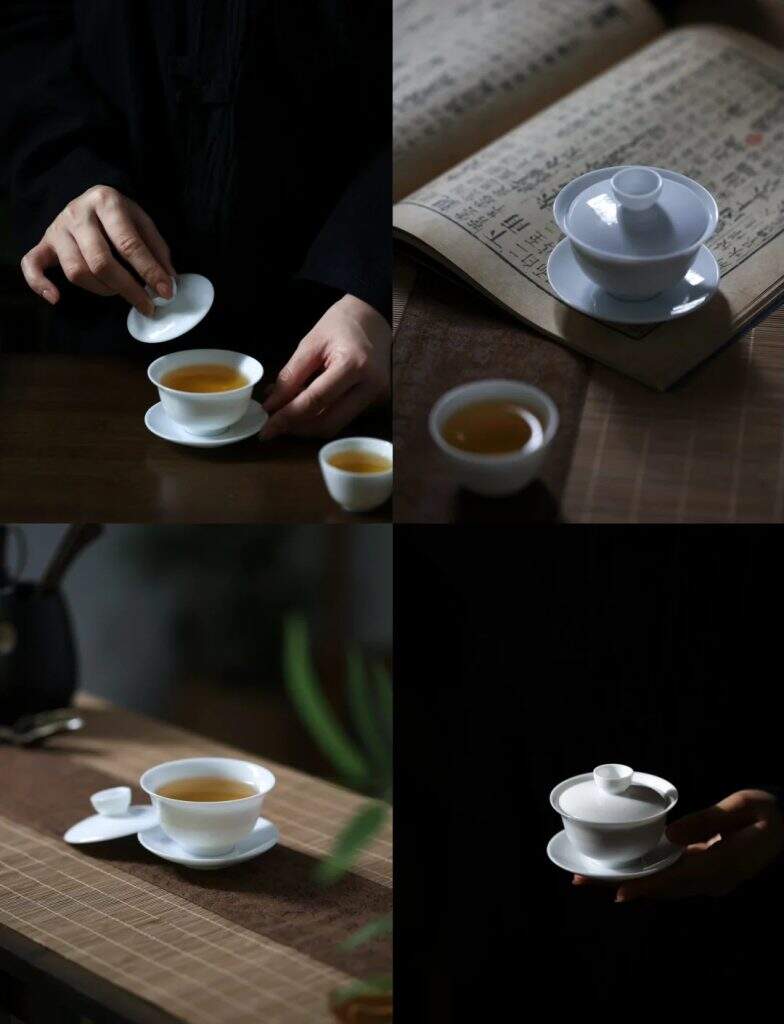The Ultimate Guide to Gaiwan Tea Sets: 7 Reasons Every Tea Lover Needs One
For tea enthusiasts seeking an authentic and versatile brewing experience, the gaiwan tea set—a traditional Chinese lidded bowl—stands as a timeless symbol of tea culture. Combining practicality, artistry, and historical significance, gaiwan tea sets have captivated tea lovers and collectors for centuries. In this comprehensive guide, we explore the origins, unique features, usage techniques, and enduring value of gaiwan tea sets, offering insights into why they remain a cornerstone of tea rituals worldwide.
The Fascinating History of Gaiwan tea set: From Ming Dynasty to Modern Day
The gaiwan (盖碗), or “lidded bowl,” revolutionized tea culture during China’s Ming Dynasty (1368–1644). As loose-leaf tea replaced compressed cakes, this three-piece design—bowl, lid, and saucer—emerged as a symbol of sophistication. By the Qing Dynasty (1644–1912), emperors like Kangxi and Qianlong popularized gaiwans for their dual role as functional teaware and status symbols.
Key Historical Milestones:
1400s: Early prototypes appeared in Jiangxi porcelain workshops.
1700s: Export gaiwans with famille rose enamels captivated European royalty.
2020s: Modern artisans blend tradition with minimalist aesthetics for Instagram-worthy designs.
Why Gaiwan Outshines Teapots: 5 Unique Features
Forget cramped infusers—here’s what makes gaiwans a tea geek’s favorite:
✅ 360° Aroma Release: The wide bowl shape maximizes fragrance diffusion.
✅ Precision Brewing: Adjust steeping time down to the second by tilting the lid.
✅ Material Versatility: Choose from heat-retaining Yixing clay or neutral porcelain.
✅ Space-Saving Design: Ideal for tiny apartments or travel tea kits.
✅ Multi-Sensory Experience: Watch leaves dance through glass walls.

Step-by-Step Gaiwan tea set Brewing Mastery
“Gongfu Cha” meets simplicity. Follow these pro techniques:
Tools Needed: Gaiwan, fairness pitcher, tea strainer, cups.
Preheat (5 sec): Swirl boiling water in the bowl to activate “tea qi” (energy).
Leaf-to-Water Ratio: Use 1g tea per 30ml water (e.g., 5g for a 150ml gaiwan).
First Infusion (5-10 sec): Pour water, lid slightly ajar for delicate teas like Dragon Well.
Serve Like a Pro: Grip the saucer with thumb, press lid with index finger—no burns!
Repeat: High-quality oolongs yield 8+ steeps.
Pro Tip: Pair porcelain gaiwans with floral teas; use Yixing clay for roasted oolongs.
Top 5 Gaiwan tea set Materials Compared
Choosing the right material transforms your tea’s personality:
| Material | Best For | Heat Retention | Flavor Impact |
|---|---|---|---|
| Porcelain | Green/White Teas | Medium | Neutral, pure taste |
| Yixing Clay | Oolong/Pu-erh | High | Enhances complexity over time |
| Glass | Blooming teas | Low | Visual spectacle |
| Celadon | Ceremonial use | Medium | Subtle mineral notes |
| Bone China | Afternoon tea | Medium | Luxurious mouthfeel |
Preserving Your Gaiwan tea set: 3 Golden Rules
A well-maintained gaiwan becomes a family heirloom. Avoid these rookie mistakes:
🚫 Dishwasher Abuse: Handwash with bamboo brushes to protect hand-painted details.
🚫 Stacking: Store lid upside-down on the bowl, separated by cloth.
🚫 Thermal Shock: Preheat before adding boiling water—especially for Yixing!
Did You Know? Antique gaiwans with “双圈款” (double-circle reign marks) can fetch over $50,000 at Sotheby’s.
Behind the Scenes: How Gaiwans Are Made
From raw clay to functional art—the journey of a gaiwan:
Clay Preparation: Yixing purple clay is aged 10+ years for optimal plasticity.
Hand-Throwing: Masters shape bowls on wheels at 280 RPM—no molds used.
Carving & Glazing: Intricate 青花 (blue-white) patterns require 12-hour kiln firings.
Quality Control: Lids are tested for “whistle fit”—a perfect seal hums when rotated.
Fun Fact: A single imperial kiln gaiwan took 72 artisans 3 months to complete in the 18th century.
Gaiwan tea set as an Investment: What Collectors Crave
Beyond utility, gaiwans are blue-chip assets in the tea world:
Rarity: 清乾隆 (Qianlong era) gaiwans with 珐琅彩 (enamel) motifs appreciated 300% since 2010.
Artist Signatures: Living masters like 顾景舟 (Gu Jingzhou) sign limited editions.
Cultural Cachet: Featured in museums like the Palace Museum Beijing.
Hot Trend: Millennials are snapping up pastel-colored gaiwans for #TeaTok aesthetics.
Why 97% of Tea Masters Recommend Gaiwans
In a 2024 Tea Guild survey, gaiwans beat teapots for:
🌟 Flavor clarity
🌟 Brewing versatility
🌟 Ease of cleaning
🌟 Aesthetic satisfaction
Your Gateway to Tea Enlightenment
More than a tool, a gaiwan is a passport to mindfulness. With every steep, you join a 600-year lineage of tea sages. Ready to elevate your tea game?
👉 Explore Our Curated Gaiwan Collection – Handpicked from Jingdezhen Kilns & Yixing Artisans.










Add comment
You must be logged in to post a comment.